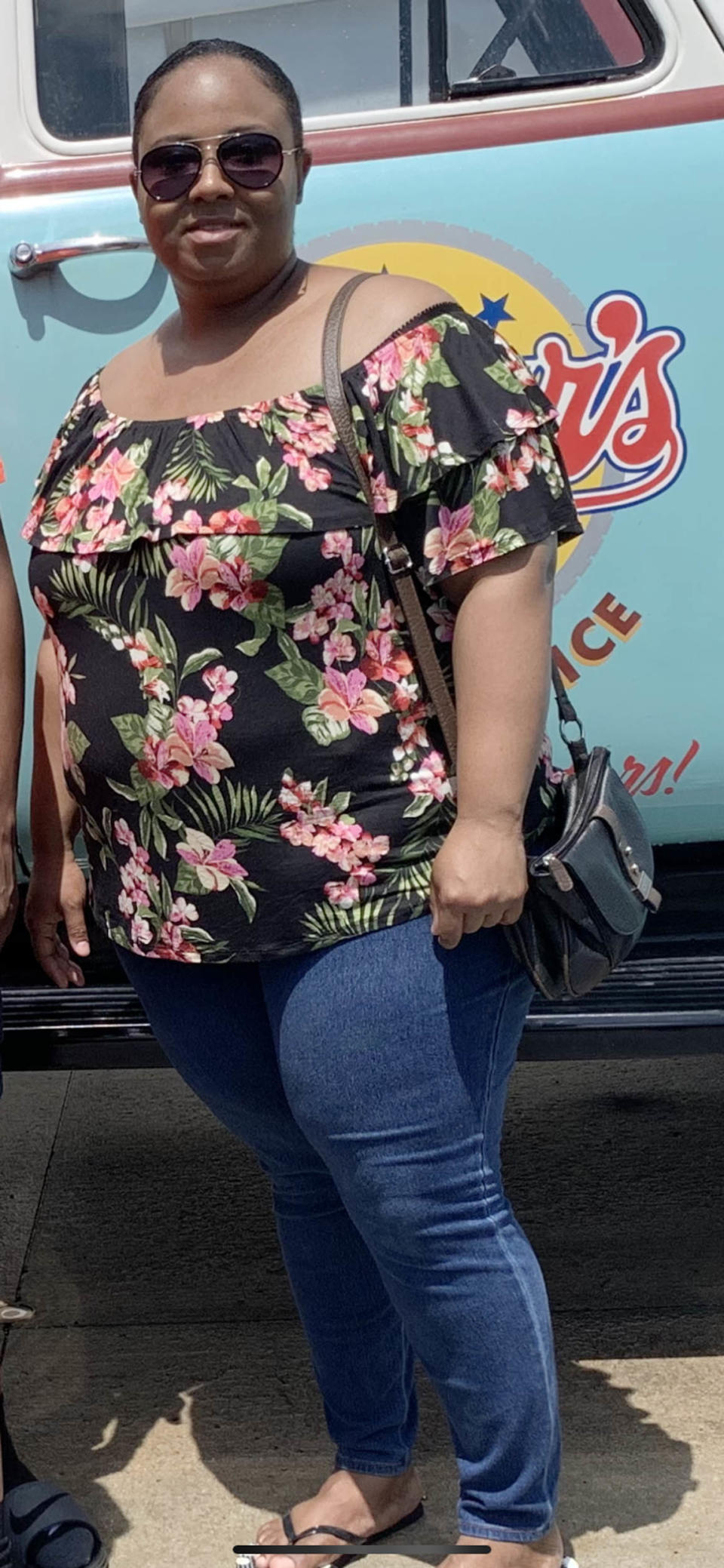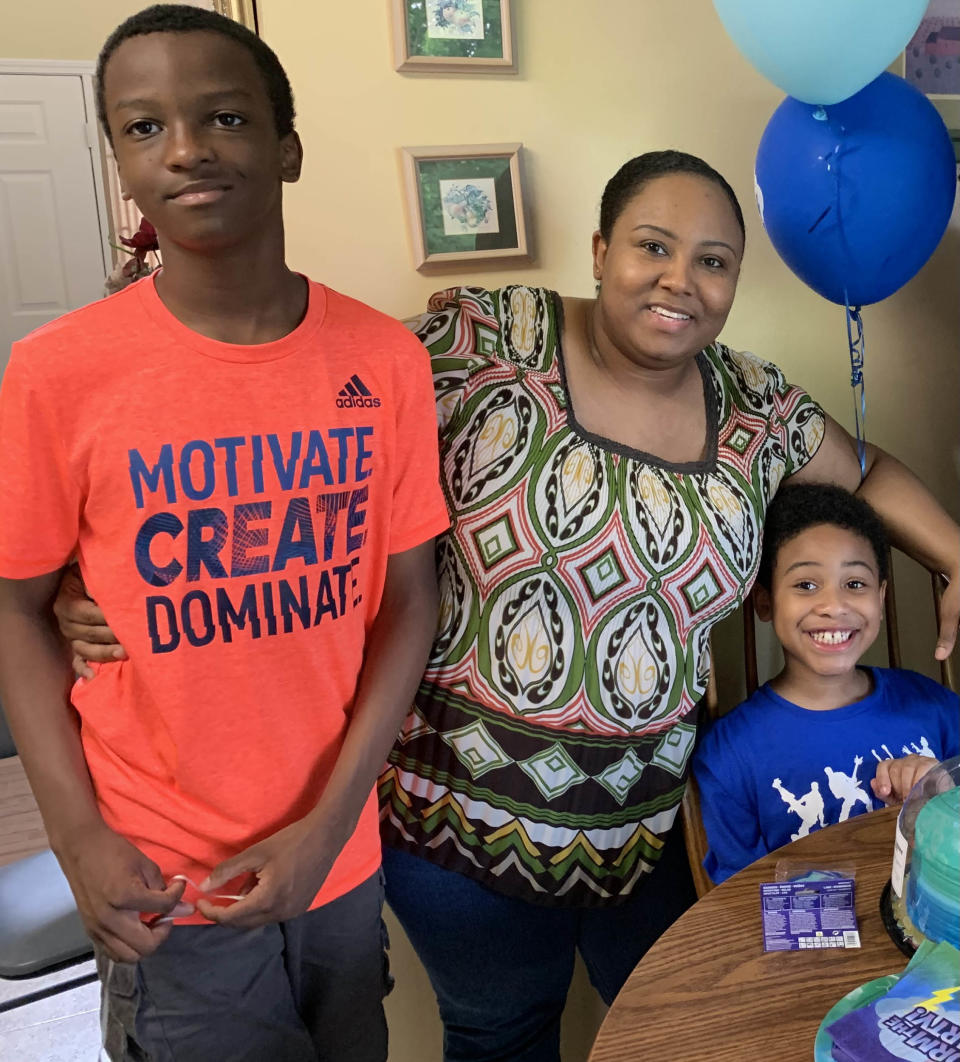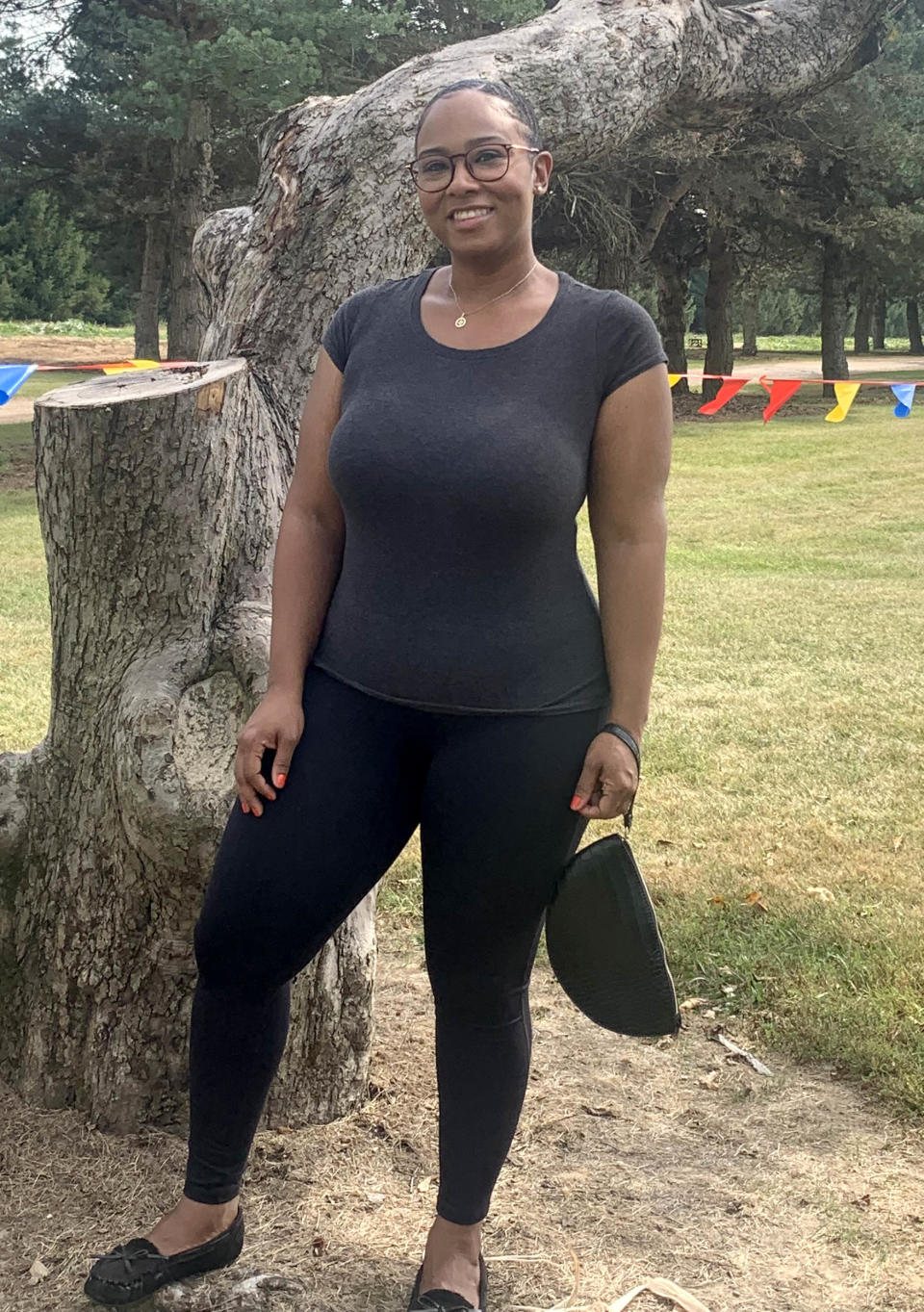The 1 key step that started this woman's 130-pound weight-loss journey
Brittney Custard was heading to the customer service desk in a department store when she started having back problems halfway through the short walk.
Her weight was close to 300 pounds at the time, a heavy burden for her 5-foot-1-inch frame.
Custard’s back hurt, and she was short of breath. She started snoring at night and felt invisible during the day.

“The heavier I got, I noticed the attention went away. It seemed like I was being ignored,” Custard, 38, who lives in Canton, Michigan, and goes by the nickname Lucky, tells TODAY.com.
“I started having back problems, and I was just like, ‘This is ridiculous. I can’t even fully parent like this.’ I had to make a change.”
The change that worked for her was the Atkins diet, a low-carb lifestyle that emphasizes high-protein foods, fat, cheese, lower-carb vegetables, nuts and seeds. It limits bread, starchy vegetables and fruit.
Weight gain
Custard says she was already aware of her weight as a child, noticing she was heavier than the other kids. But she was active, performing, tap dancing and doing some local modeling.
During a meeting with a modeling agency when she was 8, an agent told her mother, “She’s not getting taller. She’s starting to gain weight.” Custard says she’ll never forget that comment.
As an adult, her go-to food choice was carbs — mainly breads and pastas. A typical breakfast might be leftover pizza, and dinner often consisted of a salad piled with croutons and fried chicken, she says.

In 2018, after Custard had endured years of irregular menstrual cycles and weight gain, she was diagnosed with polycystic ovary syndrome (PCOS), a hormonal imbalance that affects 10% of women of childbearing age, according to the Office on Women’s Health.
It made it difficult to expand her family and travel because she never knew when her period might start.
Custard’s mental health was suffering, too, with continued worries about her weight. “Throughout life, it was just kind of, 'How come I can’t be as small as the next person?'” she says.
She had a miscarriage in October 2019. At that point, she weighed 273 pounds, and over the next 10 months, she put on more than 20 pounds. She reached her maximum weight of 297 in August 2020.
Weight loss
The first step toward losing weight was journaling to identify behaviors and triggers that caused her to overeat, Custard says.
“Anytime I had an urge, anytime I had a craving, I would write down my state of mind. Why am I having this craving?” she recalls.
“OK, I notice I (eat) bread when I’m feeling like this. When I’m stressed out here, I tend to order out. I’ll get pizza.”
By observing herself and analyzing her eating habits, Custard says she noticed she was eating many carbs and drinking a lot of soda. That’s when she started looking into a low-carb diet.

She first stopped drinking soda and juices. Then, she began eliminating high-carb foods. “Some people say one day at a time, but I say one food at a time,” Custard says about eliminating problem foods. “Get accustomed to that, and that way, you don’t have as much cravings when you wean yourself off the items.”
She now absolutely avoids pizza and pasta, and rarely eats bread. The focus is on lean proteins and vegetables. Custard eats some fruits but tries to stay away from too much sugar.
Breakfast might mean eating a meal replacement bar. Custard calls herself “a major salad head,” so lunch and dinner may be romaine lettuce with salmon or chicken.

If she craves some carbs, she’ll have a turkey wrap instead of a turkey sandwich. Her favorite exercise routine is Vinyasa yoga, which focuses on flow.
Custard says she now weighs 163 pounds, calling it a “day and night” difference from her maximum weight of almost 300. “I am running around with my boys now,” she notes. “It’s very nice.”
Some experts have praised low-carb diets, noting they're effective for weight loss and seem to reduce hunger.
"When you limit carbohydrates, the body gets really good at burning its own body fat because it doesn’t have a lot of sugar to burn for fuel," Jeff Volek, Ph.D., professor in the department of human sciences at Ohio State University, who’s been studying low-carb diets for 25 years, previously told TODAY.
But is it healthy?
When the American Heart Association rated popular diets for how well they align with heart-healthy eating, it classified Atkins as a very low-carb diet and gave this type of eating plan the lowest scores.
While very low-carb diets have strengths — such as emphasizing non-starchy vegetables, nuts and fish, and avoiding added sugar — they also restrict fruits, legumes and whole grains, which may lead to nutritional deficiencies, the AHA noted in a 2021 scientific statement. These diets are also high in fat without limiting saturated fat, it added.
Custard says Atkins was a remedy for her biggest issue — eating too many carbs — and believes she can stick with the diet long-term. Custard urges others to figure out what eating style works for their body.
This article was originally published on TODAY.com

